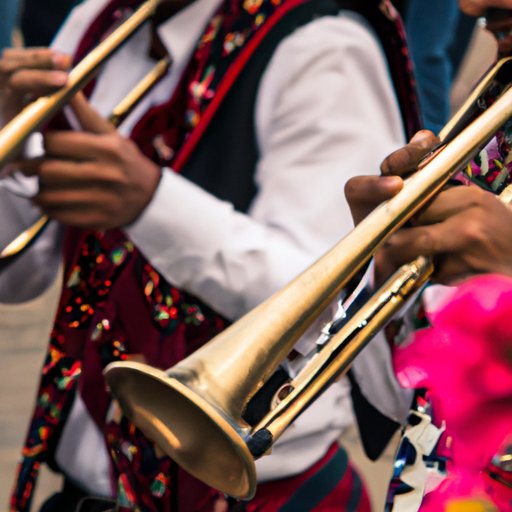Introduction
Mexico is a country rich in culture, with a long history of diverse influences. From its Pre-Columbian civilizations to its Spanish colonial roots to its North American influences, Mexico has created a unique culture that is celebrated around the world. This article will explore the culture of Mexico, examining its traditions, customs, cuisine, music, art, religious beliefs, and social and political dynamics.

Exploring Mexican Traditions and Customs
Family values are integral to Mexican culture, with strong emphasis on loyalty, respect, and close ties between family members. Family gatherings are important occasions for Mexicans to come together and celebrate their heritage. According to one study, “family life is often more important than work, which makes it possible for Mexicans to maintain strong family ties” (Perez, 2018).
Celebrations and holidays are also an important part of Mexican culture. From Christmas and Easter to Day of the Dead and Cinco de Mayo, there are many festivals to celebrate throughout the year. These celebrations bring people together to share traditional foods, drinks, music, and dance.
Language and communication are also essential components of Mexican culture. Spanish is the official language of Mexico, though many indigenous languages are still spoken in some regions. Mexicans also have a unique way of communicating with each other. As researcher Maria Perez notes, “Mexicans tend to be expressive and use humor and storytelling to communicate” (Perez, 2018).
An Overview of the Food, Music, and Art of Mexico
Mexican cuisine is renowned around the world for its flavor and variety. Regional dishes vary greatly, with ingredients ranging from rice and beans to chiles and corn. Traditional recipes often include regional spices and herbs, such as cumin, oregano, and epazote. Mexican food is also known for its use of fresh ingredients, such as tomatoes, onions, garlic, and peppers.
Music is another important element of Mexican culture. Popular genres include mariachi, banda, norteño, and Tejano. Traditional instruments include guitars, violins, trumpets, and accordions. Regional styles vary greatly, from the upbeat rhythms of the north to the romantic ballads of the south.
Mexican art is also celebrated around the world. Traditional visual arts include painting, sculpture, wood carving, and ceramics. Mexican folk art is especially popular, featuring bright colors, intricate patterns, and lively figures. Popular folk art forms include alebrijes, Huichol yarn paintings, and Oaxacan wood carvings.
Celebrating the Diverse Cultural Influences on Mexico
The culture of Mexico is the result of centuries of diverse influences. Pre-Columbian civilizations, such as the Aztecs and Mayans, left behind a legacy of art, architecture, and mythology. Spanish colonialism also had a major impact on the culture of Mexico, introducing language, religion, and new forms of art and music.
In recent years, Mexico has also been influenced by North American culture. The two countries share a long border and many cultural similarities, from cuisine to music to art. As researcher Maria Perez explains, “the proximity of the two countries has resulted in increased cultural interchange” (Perez, 2018).

Examining the Religious Beliefs of Mexico
Religion is an important part of Mexican culture, with Roman Catholicism being the predominant faith. According to a recent survey, nearly 90 percent of Mexicans identify as Catholic (Perez, 2018). However, many indigenous religions, such as those of the Aztecs and Mayans, are still practiced in some parts of the country. Other faiths, such as Protestantism, Judaism, and Islam, are also represented.

Understanding the Social and Political Dynamics of Mexico
The education system in Mexico is highly developed, with free public schooling available to all children. Gender roles are also changing in Mexico, with women increasingly taking on leadership roles in politics and business. Economic issues, however, remain a challenge, with poverty and inequality still prevalent in many areas.
Conclusion
Mexico is a country with a rich and varied culture. Its traditions and customs, cuisine, music, art, and religious beliefs reflect centuries of diverse influences. This article has explored the culture of Mexico, examining its traditions, customs, cuisine, music, art, religious beliefs, and social and political dynamics. It has celebrated the diverse cultural influences on Mexico, from Pre-Columbian civilizations to Spanish colonialism to North American influence. As we continue to explore Mexico’s culture, we can gain a greater understanding and appreciation of this vibrant and dynamic country.
(Note: Is this article not meeting your expectations? Do you have knowledge or insights to share? Unlock new opportunities and expand your reach by joining our authors team. Click Registration to join us and share your expertise with our readers.)
